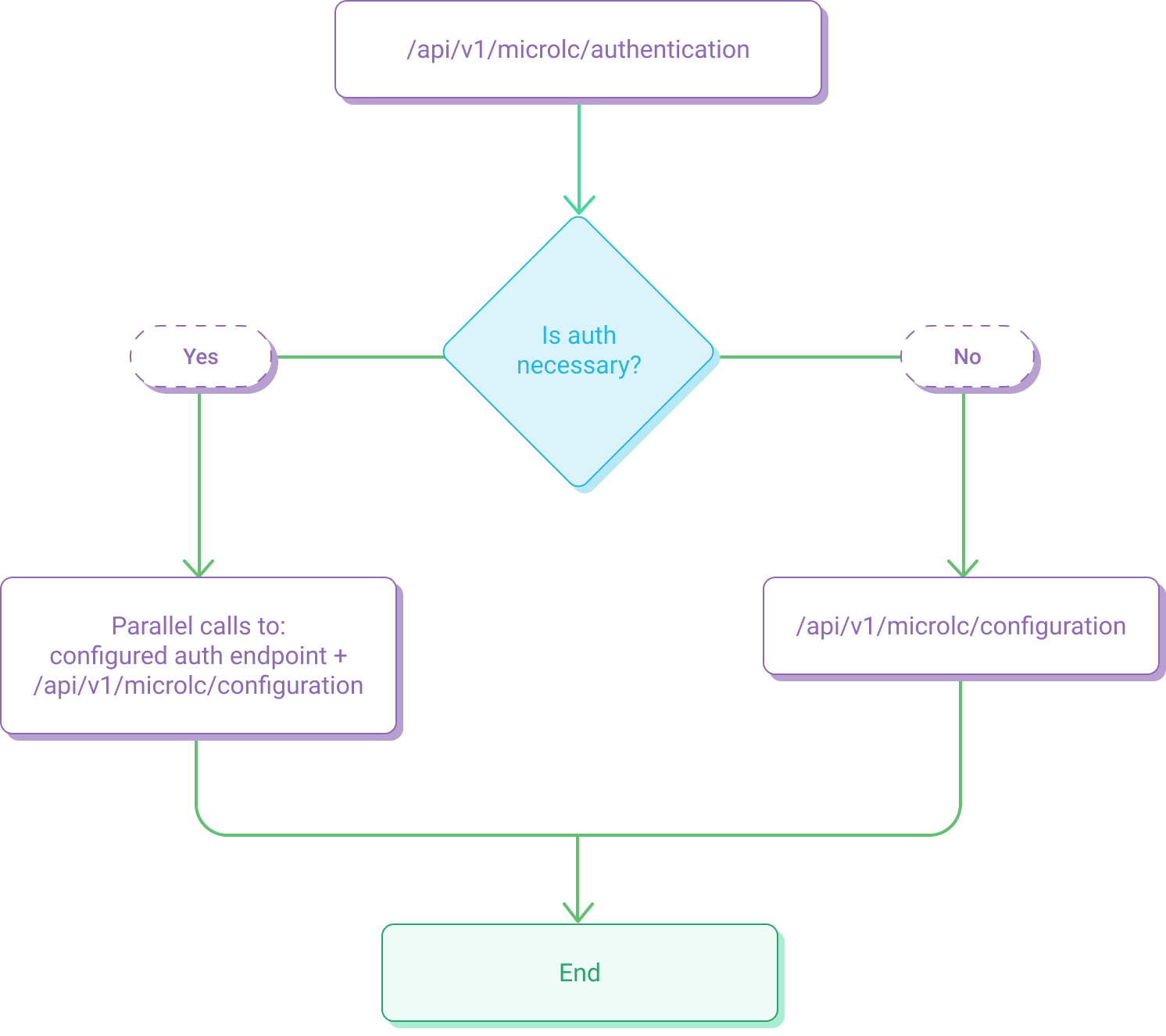Authentication
Authentication configuration
The endpoint that exposes the authentication configuration is /api/v1/microlc/authentication.
Configuration structure
The authentication configuration is a JSON object with two root properties which defines if the authentication process is expected and where the user information are provided.
isAuthNecessary
- type: boolean
- required:
false - default:
false - description: defines if the authentication process is expected.
This property can be used to avoid the authentication process, or to make a public instance ofmicro-lc.
userInfoUrl
- type: string
- required:
false - description: defines which endpoint exposes the user information: it will be called using the
GETmethod.
If authentication is not expected, this should not be provided. Otherwise, it is mandatory.
userLogoutUrl
- type: string
- required:
false - description: defines the page that will handle the user logout.
If authentication is not expected, this should not be provided. Otherwise, it is mandatory.
Example
{
"isAuthNecessary": true,
"userInfoUrl": "https://example.com/your/authentication/api",
"userLogoutUrl": "https://example.com/your/logout/page"
}
User authentication
The authentication process is optional and completely configurable. The authentication endpoint, that exposes the authentication configuration, is called first.
Then, the next endpoint to be called are different, depending on whether the authentication is required or not.
- If authentication is not required (
isAuthNecessary = false), then only the configuration endpoint is called. - If authentication is required (
isAuthNecessary = true), then the endpoint provided in the userInfoUrl is called, in parallel with the configuration endpoint.
The entire flow can be summarized with the following picture:

User info response
To be valid for micro-lc, the userInfoUrl response must adhere to the following JSON schema:
{
type: 'object',
properties: {
avatar: {
type: 'string',
},
email: {
type: 'string',
},
groups: {
type: 'array',
items: {
type: 'string',
},
},
name: {
type: 'string',
},
nickname: {
type: 'string',
},
},
required: ['email', 'groups', 'name'],
}
Example
{
"email": "mocked.user@mia-platform.eu",
"groups": [
"users",
"admin"
],
"name": "Mocked User",
"nickname": "mocked.user",
"avatar": "https://i2.wp.com/cdn.auth0.com/avatars/md.png?ssl=1"
}
Plugin ACL
Each plugin can optionally adhere to an ACL,
that can be defined using the aclExpression configuration.
To evaluate, in the aclExpression is injected the groups object, take from the current user profiles (i.e. groups.admin && groups.ceo)
The match between the aclExpression and the current user profiles is made by be-config.
be-config must receive the user profile in a header. Thanks to the environment variable GROUPS_HEADER_KEY, you can customize the names of the user profiles in be-config instance.
The only supported separator for the profiles injected in header is the comma , (i.e. admin,developer,owner).
From version 0.9.0, in addition to user profiles it is possible evaluate in the aclExpression also the user permissions required to access a specific resource.
be-config must receive the user's permissions in stringified additional properties object in a header. Thanks to the environment variable USER_PROPERTIES_HEADER_KEY, you can customize the header used in be-config instance. Though, the property that contains the user's permissions string array must be permissions as shown in the following example:
{"{{USER_PROPERTIES_HEADER_KEY}}":"{\"permissions\":[\"api.companies.view\",\"api.companies.create\"]}"}
From version 0.9.0, in the aclExpression is injected the permissions object alongside the groups object, so it's possible to write them combining user profiles and permissions (i.e. groups.admin && permissions.api.companies.create)
micro-lc doesn't inject any header: they must be provided by external services.